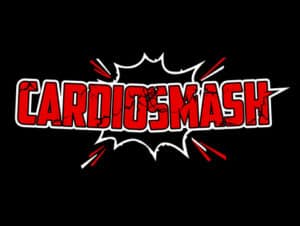Intermittent fasting is a craze that has been popular for a few years now. Many lean people were already doing this and never knew it. Some of them still don’t, because they never needed to investigate how to lose weight. This is because they never gained weight in the first place.
The effectiveness of intermittent fasting is undeniable. As long as you don’t go too crazy during your eating window. You have more flexibility with your foods than most diets or eating plans.
Fasting will allow your body to clear the digestive system, allowing for better nutrient absorption. You can eat more carbs and still achieve ketosis later during the following fast. You will even be in a good position to gain muscle with a growth hormone boost and improved muscle protein synthesis.
We all want to maximize results, and there are a few different ways to approach fasting. The big question is:
Which format is the best approach for fat loss?
There are plenty of choices for different fasting protocols. From 12 hours to 3 or more days, the benefits of fasting on your health and weight are also plentiful. Specifically, we are discussing the fat loss effects of the methods that take place within one 24 hour cycle. Let’s take a look at the most popular types of intermittent fasting.
| Name | Fasting window (hours) | Eating Window (hours) |
| 16/8 | 16 | 8 |
| 18/6 | 18 | 6 |
| OMAD One Meal A Day | 23 | 1 |
| 20/4 | 20 | 4 |
16/8
Pros:
- Longer eating window
- Allows for more normal eating schedule, i.e. lunch and dinner
- Easier to stick to long-term
- Very little change for many people
- Actually promotes muscle gain
Cons:
- Slower rate of fat loss than other protocols
- Shorter fast
- Less benefits from the fast itself
16/8 is the easiest option for most people. It simply requires skipping one meal, usually breakfast, and some discipline in avoiding snacks after dinner. It is still practical for a healthy social life, as you can still have lunch with friends, and dinner with the family. This is not a huge change for many people and it makes it a sustainable choice. This is important because, if it’s a sustainable plan, it’s a good choice for the long term.
The fast is long enough to give you some great benefits. Your digestive system will get a rest and you’ll burn some fat stores. You will also allow your insulin levels to normalize and get a boost of growth hormone.
The 16/8 protocol is a good choice but has its drawbacks compared to your other options. For instance, you won’t get as much benefit for your health and digestive system as you might from a longer fast. You won’t remain in the favorable hormonal balance that comes after 13 hrs without calories for as much time as with a longer fast.
Ultimately you will not burn fat as fast as you will when using some of the other fasting styles. However it is a less extreme version so it will be easier to stick to, probably leading to good results on a longer timeline. It is the easiest option, but will have the slowest results.
18/6
Pros
- Manageable eating window
- Eating window is still long enough to allow 2 meals
- Enhanced fat loss
- Muscle gain still possible
Cons
- Harder to stick to – especially on the weekends!
- Hunger is more of an issue than 16/8
18/6 will lead to more fat loss than 16/8. The extra couple of hours in a fasted state will mean that many calories will be taken from your fat reserves. 18 hours doesn’t feel much longer than 16 hours, but will accelerate your results.
The eating window is still long enough to get a couple of real meals in each day, while not long enough for you to overeat easily. You will feel very full after going 18 hours without food and then eating two meals in 6 hours so you can go to bed feeling satisfied.
On the downside, your hunger may be a little worse than it would be with a shorter fast, and it is harder for many people to keep to this routine on the weekends (non-work days). But, overall this is a very sustainable approach for the average person.
OMAD
Pros
- Excellent for fat loss
- Long fast
- Many benefits of longer fast
- Simple
- Easy once the habit is formed
- Saves Money and Time
- You probably won’t lose muscle
Cons
- Requires a great deal of mental fortitude
- Need to get a whole days worth of nutrition into one meal.
On OMAD, or one meal a day, you will get the maximum benefits from the fast, including autophagy and almost all your calories will come from fat for, essentially, the whole day!
This is the simplest format possible, and will save you a ton of money, time, and mental energy in planning, buying, and preparing meals. Think about it, you will only eat for about 7 hours or less per week, compared to 21+ hours for a traditional 3-meal-a-day lifestyle. This can greatly enhance your day’s productivity.
Your growth hormone will be elevated for an extended period leading to minimal muscle loss, or even muscle growth, and accelerated fat loss.
This is quite a difficult plan to stick to, at least until it becomes your routine. Eating once a day will free up time, but you’ll need to stay busy – and well hydrated – or you may spend a lot of it thinking about food!
You’ll need to get all your protein, fats, (and carbs if you do that) into one meal. This can be difficult, but meat and a ton of veggies is basically the way to go. You’ll probably want to take some vitamins too.
It is not for the faint of heart or those who usually give less than 100%. But if you have the mental strength, the OMAD fasting method will give great results in minimum time.
20/4
Pros
- Long fast
- Great fat burning results
- You’ll stay anabolic.
- Longer eating window than OMAD
Cons
- Harder to stick to than other formats with shorter fasts
The 20/4 is sort of a hybrid between OMAD and 18/6 fasting protocols. The advantage over OMAD is that the longer eating window gives you a little added flexibility. This longer eating period allows you to consume a few more calories so it will have slightly slower results than OMAD, but is easier to adhere to daily and may keep you a little happier. Realistically, after a one large, complete meal, you can’t usually eat a whole lot more within the next 3 hours so overeating shouldn’t be much of an issue.
You will still be abstaining from food for 20 hours so your hormones will be in a favorable state, and you will still burn a ton of fat, clean out your digestive system, and enter a state of autophagy. Your results will be consistently better than they would be with a shorter fasting period.
This slightly extended version of an 18/6 is what I personally adhere to, and I have found it to be the best approach for me. I can eat a little longer, which takes the pressure of getting all your macros and micros into one meal. Just continue with healthy snacks after, or before your meal, and you will be well satisfied with the 4 hour eating window.
If you really want to be sure that you are actually progressing, then you need to be monitoring your body fat. just because you’re losing pounds doesn’t mean you’re getting less fat, you could be losing lean mass. Conversely, if you’re trying to ‘bulk up’ you may think that you’re gaining muscle, but you could actually be gaining more fat than you realize. To be sure, check out this Omron handheld body fat reader available on Amazon. This is the one I have at home and I use it regularly to give me a clear and accurate reading of my body composition.
When do you actually start burning fat?
As soon as the food from your last meal has been digested and your insulin has dropped back down to your pre-meal low, you will be burning fat during most activities.
Depending on the size of your last meal, and what you ate, this could be as little as 6-8 hours. By 12 hours, you will definitely be in a truly fasted state.
12 hours is the point where fasting really starts to work it’s magic. You get a massive growth hormone blast from your pituitary gland. Growth hormone is known to have a very positive effect on body composition, so this increases the amount of fat you burn and reduces the loss of muscle that you otherwise might suffer after so long without consuming protein.
The longer you stay in this state, from 12 hours on, the more productive your fast will be. Obviously this is only true to a point. But longer fasts, perhaps 24-36 hours, will boost your fat loss results even further. This style of fasting, however, is much harder to work into the average person’s daily life.
So, when you perform a 20 hour fast, you are really stretching out the window of time in which your body is burning fat, and cleaning itself out through autophagy. The following 4 hour window of eating will satisfy you hunger quickly. You will see results fast, reinforcing your commitment to the fasting protocol.
So, Is 20/4 Fasting The Best?
In practice, any of these approaches will yield results in the form of fat loss and health benefits, as long as you don’t binge eat during your feeding window.
The choice becomes a balance between which method you will be able to stick to, and how badly you want to see the results. The 20/4 protocol is a great choice for those that want best results with a little less hunger than on OMAD. It’s a close second to OMAD for effectiveness, but allows you to keep eating just a little longer!
20 hours without food is quite a long time, and you will find that you will get full quite quickly after breaking your fast. This will help you eat at a caloric deficit each day too. This gives you the best of both worlds, so to speak, with the benefits of a long fast, but an eating window that feels much longer than OMAD.
The main takeaway is this: a 20 hour fast will do wonders for your health, and for your waistline. You’ll feel fresh, alert, and light on your feet; but you can eat enough to be content within 4 hours without having the time to really overdo it. So pick whichever approach works for your lifestyle, but 20/4 is definitely worth a try.

